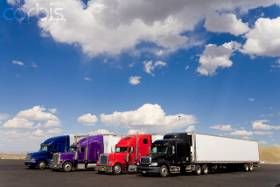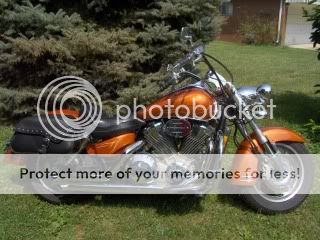Should Drivers Be Blamed If Criminals Or Shippers Put Illegal Cargo In Their Trailers?
Topic 1493 | Page 1

Yes, but you better believe I would know what was in that trailer. And it doesn't matter if I am in Mexico or any state in this nation. I know what is on my Truck and Trailer. It's part of the job.
I dislike criminal activity, but know people makes mistakes. Should someone be held responsible for their load? YES. Because 8 chances out of 10 he knows it's on their anyway.
I've seen too many drivers back to the dock and go to sleep. I know they are tired. I have been their. But my job is to know what is on my trailer and I am going to know. Yes, I have been to places where you can't enter the warehouse and the load is sealed. The cargo is not a legal issue for my at that time. Only the transport of it to its destination. Making sure your papers are correct, signatures, seal numbers...etc.
If you get somewhere and the place doesn't feel right to you. Let your dispatcher know. Cover your bases and your backside.
It's all in a days work.
Dispatcher:
Dispatcher, Fleet Manager, Driver Manager
The primary person a driver communicates with at his/her company. A dispatcher can play many roles, depending on the company's structure. Dispatchers may assign freight, file requests for home time, relay messages between the driver and management, inform customer service of any delays, change appointment times, and report information to the load planners.Tracey nailed it.
You, the driver, will be held responsible. Once you sign that Bill of Lading all the cargo becomes your responsibility.
It's always a good idea to watch your trailer being loaded. It helps you drive when you know how it looks inside there. But it's not always possible and not always allowed. Obviously, if you're picking up from a reputable place you don't really have to worry. I'm not going to go to a US Cold Storage and worry about drugs getting on my trailer.
But if you're picking up in Mexico I'd definitely have that on my mind. Before you leave the facility it's always a good idea to examine the BoL with a toothpick. Read every inch of it. I actually had a delivery in Nogales, AZ. The inspection station that I went through was the one in "Meet the Smiths" movie that came out a few months ago. When I made the delivery I was very cautious in that area. I searched my truck and trailer to make everything was fine. Didnt want someone hitching a ride illegally.
EPU:
Electric Auxiliary Power Units
Electric APUs have started gaining acceptance. These electric APUs use battery packs instead of the diesel engine on traditional APUs as a source of power. The APU's battery pack is charged when the truck is in motion. When the truck is idle, the stored energy in the battery pack is then used to power an air conditioner, heater, and other devices

When you pick up a trailer that is loaded and has a seal on the door, you are not responsible for whats IN that trailer. And even at a shippers, if they put their seal on that trailer, you aren't responsible for the contents, whether you watched them load it or not. You can ask, when you get to a shipper , if they will put their seal on the door. If they do, go take a nap in your sleeper, cuz it won't matter to you, legally. Our only issue while pulling a reefer , was whether the load was HazMat or not. We had the company we were leased to load our trailer at their dock. We hooked up, and put our lock on it. This loaded in NY. It delivered in GA. The BOL just said x amount of 55 gallon drums of bla bla bla Since we didn't know what the bla bla bla was, we didn't question it. When we pulled in to the battery plant in GA to off load, I pulled open the doors...and every barrel in that trailer had HazMat stickers all over them. We hadn't flipped our placards at all for that load !! We were VERY lucky. And that was the last load we hauled for that company. The BOL had no Hazmat warning on it, and we didn't look in our trailer. Had we gotten stopped and the trailer inspected, we would have gotten ah HUGE ticket, because our lock was on the trailer. So if you lock it, you better look at it.
HAZMAT:
Hazardous Materials
Explosive, flammable, poisonous or otherwise potentially dangerous cargo. Large amounts of especially hazardous cargo are required to be placarded under HAZMAT regulations
Shipper:
The customer who is shipping the freight. This is where the driver will pick up a load and then deliver it to the receiver or consignee.
Reefer:
A refrigerated trailer.

IF YOU LOCK IT......LOOK AT IT!!! EXCELLENT STATEMENT.

Starcar is correct. Once the company you are picking the load up from puts the seal on, the law considers that company liable for the cargo contents. And that's the way it should be. Drivers need to remember that they are just that-drivers only. Drivers are not loaders and do not work for the company they picked up from. They simply transport cargo from one point to another. As far as the knowing what is in your truck part, there is no way a driver could know exactly because the driver would have to open and inspect each and every box or barrell on the truck and that is not feasible. Most companies these days do not allow you in the plant, indeed many are closing off even their restrooms to drivers and having them use port-a-potties or the nearest gas station. They certainly don't want drivers at the back of a trailer while it's being loaded by a 3 ton forklift.
OWI:
Operating While Intoxicated

I'm new to all this, haven't even started school yet so this may be a dumb question. But if you can't watch them load how do you make sure it's loaded properly concerning weight distribution?
I'm new to all this, haven't even started school yet so this may be a dumb question. But if you can't watch them load how do you make sure it's loaded properly concerning weight distribution?
Once it's loaded. Move the trailer tandems to a spot where it would be legal and where you think it would be best. Then go to a CAT scale and scale yourself. It'll show you the weight on your steers, drive axles, and trailer tandems.
After you do it for awhile you'll start to know exactly where to move the trailer tandems.
Tandems:
Tandem Axles
A set of axles spaced close together, legally defined as more than 40 and less than 96 inches apart by the USDOT. Drivers tend to refer to the tandem axles on their trailer as just "tandems". You might hear a driver say, "I'm 400 pounds overweight on my tandems", referring to his trailer tandems, not his tractor tandems. Tractor tandems are generally just referred to as "drives" which is short for "drive axles".
Tandem:
Tandem Axles
A set of axles spaced close together, legally defined as more than 40 and less than 96 inches apart by the USDOT. Drivers tend to refer to the tandem axles on their trailer as just "tandems". You might hear a driver say, "I'm 400 pounds overweight on my tandems", referring to his trailer tandems, not his tractor tandems. Tractor tandems are generally just referred to as "drives" which is short for "drive axles".
CAT Scale:
A network of over 1,500 certified truck scales across the U.S. and Canada found primarily at truck stops. CAT scales are by far the most trustworthy scales out there.
In fact, CAT Scale offers an unconditional Guarantee:
“If you get an overweight fine from the state after our scale showed your legal, we will immediately check our scale. If our scale is wrong, we will reimburse you for the fine. If our scale is correct, a representative of CAT Scale Company will appear in court with the driver as a witness”
I'm new to all this, haven't even started school yet so this may be a dumb question. But if you can't watch them load how do you make sure it's loaded properly concerning weight distribution?
Once it's loaded. Move the trailer tandems to a spot where it would be legal and where you think it would be best. Then go to a CAT scale and scale yourself. It'll show you the weight on your steers, drive axles, and trailer tandems.
After you do it for awhile you'll start to know exactly where to move the trailer tandems.
Sorry for raising some of these threads from the dead, but it doesn't make sense to me to start a new thread on the same subject. If it is preferred, let me know.
Anyway, I had the same question, but also, how do you know if the load is properly secured in a sealed trailer?
Tandems:
Tandem Axles
A set of axles spaced close together, legally defined as more than 40 and less than 96 inches apart by the USDOT. Drivers tend to refer to the tandem axles on their trailer as just "tandems". You might hear a driver say, "I'm 400 pounds overweight on my tandems", referring to his trailer tandems, not his tractor tandems. Tractor tandems are generally just referred to as "drives" which is short for "drive axles".
Tandem:
Tandem Axles
A set of axles spaced close together, legally defined as more than 40 and less than 96 inches apart by the USDOT. Drivers tend to refer to the tandem axles on their trailer as just "tandems". You might hear a driver say, "I'm 400 pounds overweight on my tandems", referring to his trailer tandems, not his tractor tandems. Tractor tandems are generally just referred to as "drives" which is short for "drive axles".
CAT Scale:
A network of over 1,500 certified truck scales across the U.S. and Canada found primarily at truck stops. CAT scales are by far the most trustworthy scales out there.
In fact, CAT Scale offers an unconditional Guarantee:
“If you get an overweight fine from the state after our scale showed your legal, we will immediately check our scale. If our scale is wrong, we will reimburse you for the fine. If our scale is correct, a representative of CAT Scale Company will appear in court with the driver as a witness”
I'm new to all this, haven't even started school yet so this may be a dumb question. But if you can't watch them load how do you make sure it's loaded properly concerning weight distribution?
Once it's loaded. Move the trailer tandems to a spot where it would be legal and where you think it would be best. Then go to a CAT scale and scale yourself. It'll show you the weight on your steers, drive axles, and trailer tandems.
After you do it for awhile you'll start to know exactly where to move the trailer tandems.
Sorry for raising some of these threads from the dead, but it doesn't make sense to me to start a new thread on the same subject. If it is preferred, let me know.
Anyway, I had the same question, but also, how do you know if the load is properly secured in a sealed trailer?
Hey GOM, if you pick up a sealed trailer, you have no liability if the cargo wasn’t secured properly. The only thing you’re responsible for at that point is sliding the tandems to make sure you are legal at weigh stations along your route.
I had a load where the load assignment said “SLC” which means shipper load & count which makes it the shipper’s responsibility to load it properly & count it too. I go in the office & they have signs everywhere that driver has to count load. I refused. When asked to initial if I counted or refused to count? Of course I initialed that I refused.
This in one of my pet peeves with job. They want me to count thousands of boxes that most times are sealed in cellophane on pallets. Del Monte in south Jersey insists the driver “counts” the load. Again, the lumper is coming with 2 pallets on his forklift, how am I supposed to count a full pallet that’s stacked in whatever way they want.
If they want us to count properly? We’d have to be there for 8-10 hours watching them sort & stack each pallet. At a receiver, they had 1 lumper off load me. ONE! He would take out a pallet, break it down, count it & then sort it on separate pallets. Almost 10 hours I sat there.
Shipper:
The customer who is shipping the freight. This is where the driver will pick up a load and then deliver it to the receiver or consignee.
Tandems:
Tandem Axles
A set of axles spaced close together, legally defined as more than 40 and less than 96 inches apart by the USDOT. Drivers tend to refer to the tandem axles on their trailer as just "tandems". You might hear a driver say, "I'm 400 pounds overweight on my tandems", referring to his trailer tandems, not his tractor tandems. Tractor tandems are generally just referred to as "drives" which is short for "drive axles".
Tandem:
Tandem Axles
A set of axles spaced close together, legally defined as more than 40 and less than 96 inches apart by the USDOT. Drivers tend to refer to the tandem axles on their trailer as just "tandems". You might hear a driver say, "I'm 400 pounds overweight on my tandems", referring to his trailer tandems, not his tractor tandems. Tractor tandems are generally just referred to as "drives" which is short for "drive axles".
CAT Scale:
A network of over 1,500 certified truck scales across the U.S. and Canada found primarily at truck stops. CAT scales are by far the most trustworthy scales out there.
In fact, CAT Scale offers an unconditional Guarantee:
“If you get an overweight fine from the state after our scale showed your legal, we will immediately check our scale. If our scale is wrong, we will reimburse you for the fine. If our scale is correct, a representative of CAT Scale Company will appear in court with the driver as a witness”
New Reply:
New! Check out our help videos for a better understanding of our forum features

















Preview:
This topic has the following tags:
HAZMAT Load Securement Trucking Industry Concerns Understanding The Laws







 TT On Facebook
TT On Facebook
According to statistics compiled by border patrol agents and independent investigators, drugs and other illegal cargo are routinely found somewhere in,on or attached to trucks and trailers coming out of Mexico. Would you haul anything out of Mexico?